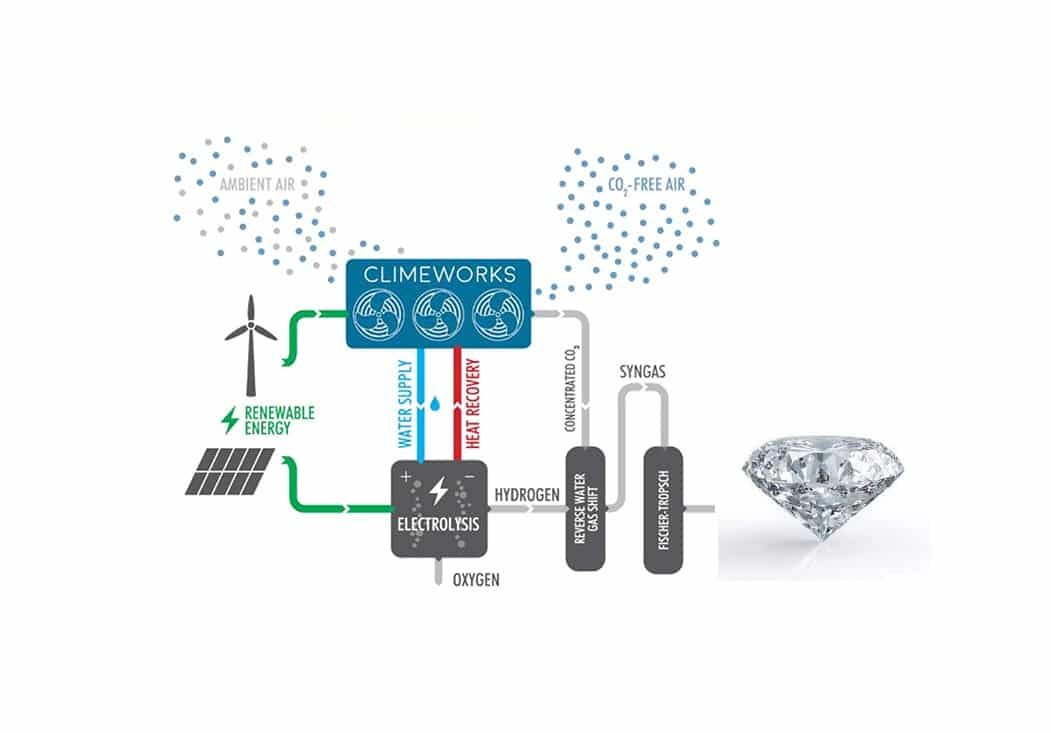The world’s first “Air” mined diamonds could signal the end of the diamond industry as we know it.
Diamonds have been around for a long time, they were not a very important gem until De Beers began their successful marketing campaign in the 20th century.
De Beers began to convince people that diamonds were a show of love and that size matters. Over time celebrities and the global PR machine made diamonds extremely valuable and “rare”.
Traditional mined diamonds have a much larger environmental impact than lab-grown diamonds.
Lab-grown diamonds are nothing new, they are cheap and can produce the same quality as mined diamonds, the problem is perception.
It was ingrained in our minds that diamonds must be expensive to show how much you love someone, but that is changing fast.
Millennials and Generation Z, are now the main purchasers of diamonds for engagement rings. They are eco-conscious and 70% of them are considering buying lab-grown diamonds.
Climeworks has partnered with Aether Diamonds to produce Carbon-Negative Diamonds.
For every carat of diamond, Aether says it removes 20 metric tons of carbon dioxide from the air (i.e., 20 carbon credits). That is more than a year’s worth of emissions for the average American.
The costs are a lot more than traditional lab-made diamonds to produce, but then again diamonds are only expensive based on perception.
With Carbon set to become one of the biggest commodities of the future, maybe one day all diamonds will be graded by the 5 Cs: carat, cut, clarity, color, and carbon credits.

